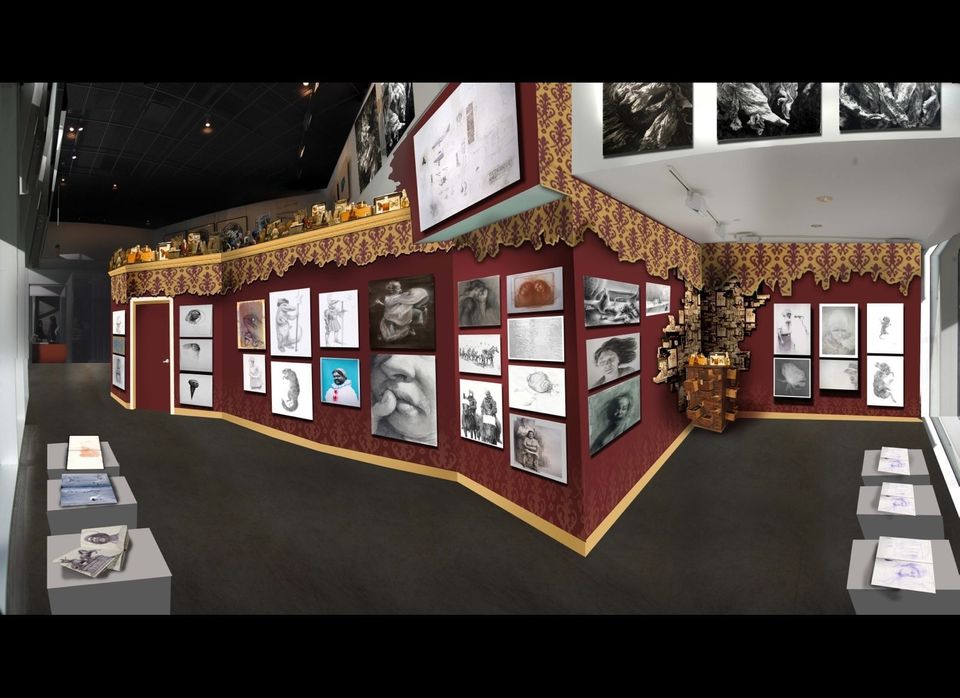Drawing is a highly intimate form of expression. Even thought it's highly relatable (we've all done it at one point or another), it's underappreciated. With the endless rush of blockbuster auctions and the celebrity-driven art scene, representational art is out of fashion. The tweeting masses aren't looking for the quiet beauty of a sketch. Drawings, it seems, get lost in all the noise.
Drawing, both in its intimacy and its immediacy, is the theme of a new show called "The Drawing Room," that runs through May 22 at the Milavec Hakimi Gallery in New York. The show, which is curated by Dina Brodsky, Karl Koett, and Tun Myaing, strips down and re-imagines the gallery experience by taking it back to the drawing board, err, drawing room.
The eponymous "Drawing Room" is a substantial installation that has taken over Milavec Hakimi's space on Cooper Square. The gallery walls, painted in the hues of Victorian England, are covered with a chaotic arrangement of pieces hung salon style. The space, taken as a whole, evokes the kind of drawing room where side conversations about life and art are not uncommon.
In one corner, a large desk, in this instance co-opted as sculpture, is cluttered with what seem to be found items -- there are books, sketching pencils, and small animal skulls. The installation's designer, Ian Gaudreau, conceived the space with a sly wink to "Sleep No More." As with "Sleep No More," the spectator is compelled to explore his surroundings. A desk drawer opens to reveal a glass display case of mounted butterflies. A miniature shark suspended in liquid among the clutter reminds us that we're not in DamienHirstLand anymore. On the surface of the desk, a half-filled sketchpad and a set of pencils sit at the ready. Some intrepid and evidently talented passersby have already taken up the invitation to add their own works to the drawing room's artistic conversation.
The clutter on the desk is not by happenstance, but instead is a collection of "oddities" contributed from the nearly thirty artists represented in show. It turns out that artists like to keep the things that they sketch. These items are little pieces of inspiration, the models of past sketches that now hang on the walls of this drawing room or perhaps another.
The works, while largely figurative, range from highly technical studies to ambiguous narrative scenes. James Adelman, who has three pieces in the show, favors a monochromatic approach with pieces in both charcoal and oil, albeit oil that has been deployed with the sensibility of a sketch artist. In another part of the gallery, a sketchbook by Nic Rad, sits open, as if awaiting his return. The characters, interspersed with shreds of writings, are impatient. They seem ready to jump off the pages.
This is Milavec Hakimi's last show in its current space, and the impending closure of the gallery has liberated the creative team and the show from commercialism. There is enormous talent represented, but there are no obvious "art stars." Instead, the presentation shows artists in their essence and it wins with intimacy rather than noise. As one attendee commented to me, "if you really want to get to know an artist, look at his drawings." In this particular drawing room, artists reveal what they draw when the galleries are closed, the auctions are over, the twitter accounts are silent, and the art buyers have returned to their lofts.
